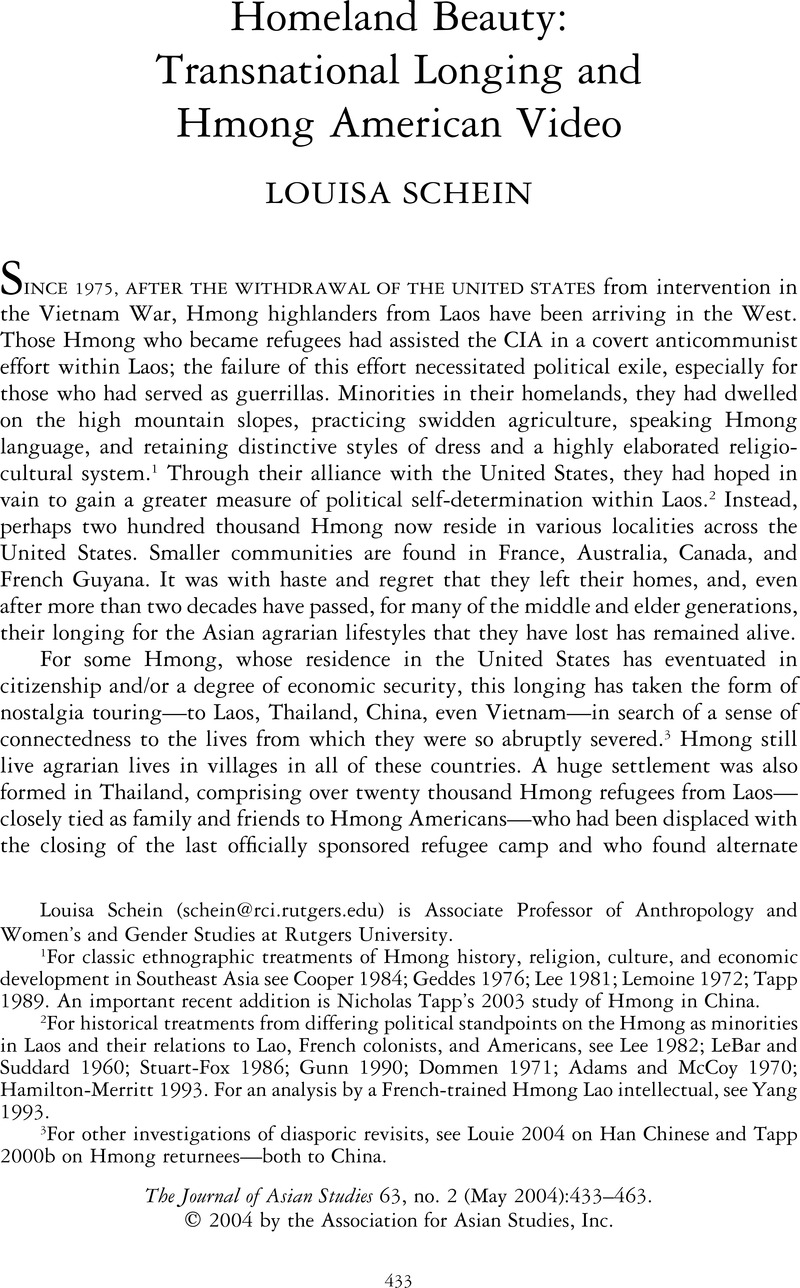Crossref Citations
This article has been cited by the following publications. This list is generated based on data provided by Crossref.
Friedman, Sarra L.
2004.
Embodying Civility: Civilizing Processes and Symbolic Citizenship in Southeastern China.
The Journal of Asian Studies,
Vol. 63,
Issue. 3,
p.
687.
Friedman, Sara L.
2006.
WatchingTwin Braceletsin China: The Role of Spectatorship and Identification in an Ethnographic Analysis of Film Reception.
Cultural Anthropology,
Vol. 21,
Issue. 4,
p.
603.
Allison, Anne
2012.
Media, Erotics, and Transnational Asia.
p.
297.
Dell, Heather
2012.
Media, Erotics, and Transnational Asia.
p.
267.
Farquhar, Judith
2012.
Media, Erotics, and Transnational Asia.
p.
53.
Manalansan, Martin F.
2012.
Media, Erotics, and Transnational Asia.
p.
33.
Friedman, Sara L.
2012.
Media, Erotics, and Transnational Asia.
p.
233.
2012.
Media, Erotics, and Transnational Asia.
p.
323.
Bengston, David N.
Schermann, Michele A.
Hawj, Foung
and
Moua, MaiKia
2012.
Culturally Appropriate Environmental Education: An Example of a Partnership with the Hmong American Community.
Applied Environmental Education & Communication,
Vol. 11,
Issue. 1,
p.
1.
Boellstorff, Tom
2012.
Media, Erotics, and Transnational Asia.
p.
75.
Cho, John (Song Pae)
2012.
Global fatigue: Transnational markets, linguistic capital, and Korean‐American male English teachers in South Korea1.
Journal of Sociolinguistics,
Vol. 16,
Issue. 2,
p.
218.
Constable, Nicole
2012.
Media, Erotics, and Transnational Asia.
p.
111.
Schein, Louisa
2012.
Media, Erotics, and Transnational Asia.
p.
203.
Mankekar, Purnima
and
Schein, Louisa
2012.
Media, Erotics, and Transnational Asia.
p.
1.
mankekar, Purnima
2012.
Media, Erotics, and Transnational Asia.
p.
173.
Zhang, Everett Yuehong
2012.
Media, Erotics, and Transnational Asia.
p.
139.
Vang, Ma
2016.
Writing on the Run: Hmong American Literary Formations and the Deterritorialized Subject.
MELUS: Multi-Ethnic Literature of the United States,
Vol. 41,
Issue. 3,
p.
89.
Michaud, Jean
2020.
The Art of Not Being Scripted So Much.
Current Anthropology,
Vol. 61,
Issue. 2,
p.
240.
Shi, Tian
2022.
Live streaming funerals: constructing togetherness and belonging in the mediatization era.
Continuum,
Vol. 36,
Issue. 4,
p.
495.
Luo, Yu
2022.
The Domestic Life of Buyi Videos: The ‘Home Mode’ in Ethnic Rural Southwest China.
Ethnos,
p.
1.





